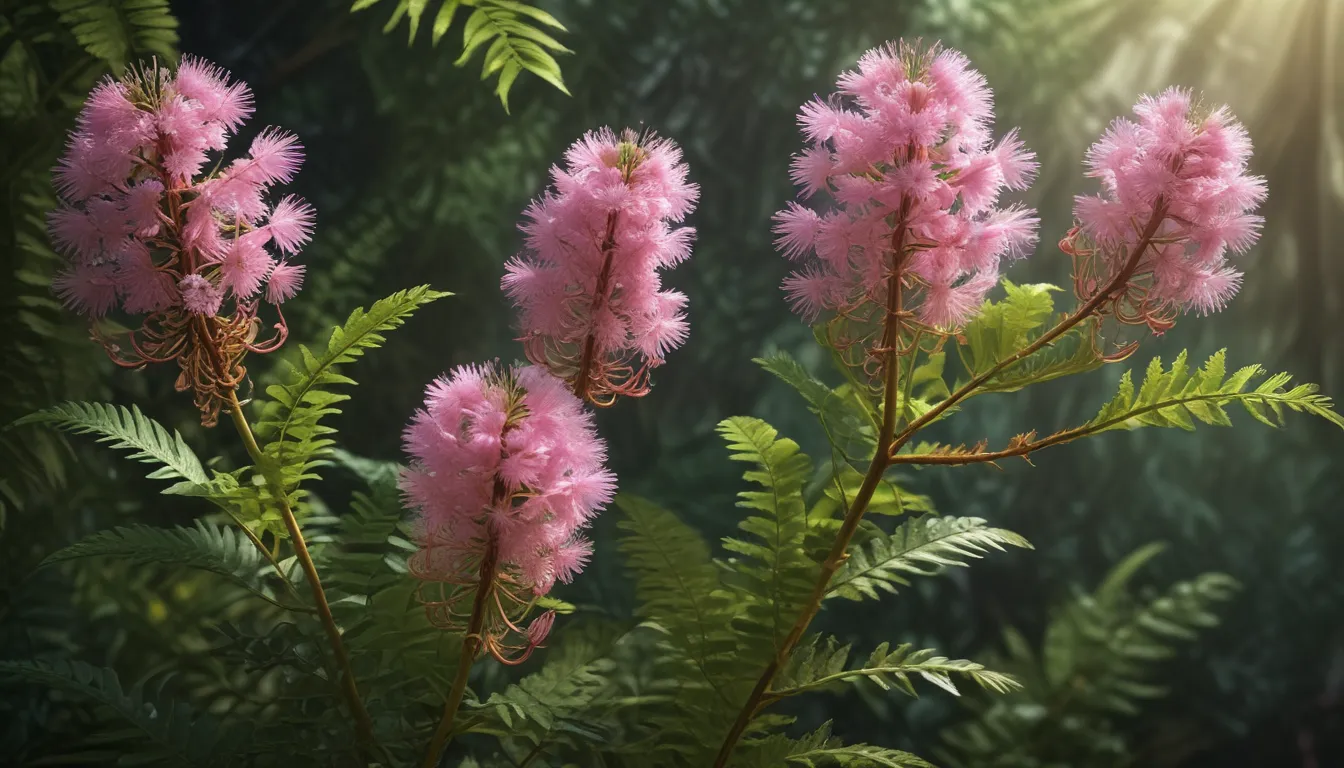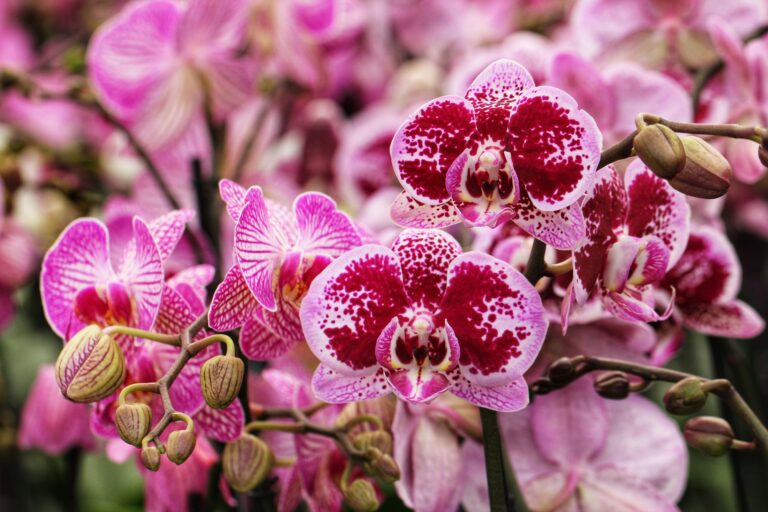The pictures we use in our articles might not show exactly what the words say. We choose these pictures to make you interested in reading more. The pictures work together with the words but don’t take their place. The words still tell you the important facts.
The sensitive plant, scientifically known as Mimosa pudica, is a botanical marvel that piques the curiosity of plant enthusiasts worldwide. Its unique ability to react to touch and movement sets it apart from other plants, making it a captivating subject for exploration. In this article, we will delve into 16 intriguing facts about the sensitive plant, shedding light on its remarkable characteristics, habitat, and role in the natural world. Join us on a journey to unravel the secrets of this extraordinary plant.
Nature’s Wondrous Creation
The sensitive plant, also known as Mimosa pudica, is a marvel of nature renowned for its ability to respond to touch and movement. Its peculiar behavior of folding its leaves when touched has fascinated scientists and plant enthusiasts for generations, making it a captivating subject of study and admiration.
The Enigmatic Sensitivity
The sensitive plant derives its name from its remarkable ability to react to touch. When its delicate leaves are brushed against, they rapidly fold and droop, creating the illusion of a plant in distress. This intriguing defense mechanism serves as nature's way of safeguarding itself from potential threats and harm.
The Leafy Mechanism
Beneath the surface, the finely divided leaves of the sensitive plant house specialized cells called pulvinus, which act as motor cells. These cells play a crucial role in controlling the movement of the leaves, enabling them to respond to external stimuli such as touch and movement.
An Adaptive Wanderer
The sensitive plant possesses a unique ability to move in response to touch, a phenomenon known as thigmonasty. By folding its leaves when disturbed, the plant not only protects itself from predators but also conserves energy by reducing water loss through transpiration. This adaptive behavior has been key to the plant's survival in diverse habitats.
Sensitivity as a Survival Strategy
In its native habitats, the sensitive plant faces constant threats from herbivores seeking to devour its leaves. By swiftly closing its leaves in response to touch, the plant deters grazing animals and avoids being consumed, ensuring its continued existence in the ecosystem.
A Captivating Display
The sensitive plant's mesmerizing ability to respond to touch has entranced audiences for centuries. Often cultivated as an ornamental plant, its unique leaf movements captivate both young and old alike. Observing the leaves fold up in response to a gentle touch is a truly enchanting sight.
A Global Phenomenon
Originating in South and Central America, the sensitive plant has spread its delicate leaves far and wide, establishing its presence in tropical and subtropical regions across Asia, Africa, and Australia. Its adaptability to various climates has allowed it to thrive as a true global wanderer.
Medicinal Marvel
For centuries, the sensitive plant has been utilized in traditional medicine for its medicinal properties. In Ayurvedic practices, it is believed to possess therapeutic benefits and is used to address ailments such as diarrhea, dysentery, and respiratory disorders. Its leaves, roots, and seeds are often brewed into teas or concocted into poultices for external applications.
Multifaceted Namesake
The sensitive plant is known by different names worldwide. While English speakers refer to it as the sensitive plant or touch-me-not plant, other languages have their own monikers for this intriguing botanical wonder. From La Planta Mimosa in Spanish to Makahiya in the Philippines, the plant's diverse names reflect its global presence and appeal.
Natural Rhythms
The leaves of the sensitive plant adhere to their unique daily rhythm, demonstrating a nyctinastic movement by opening during the day and closing at night. This natural timekeeping behavior is influenced by the plant's response to light and darkness, showcasing its innate connection to the environment.
Inspiration in Nature
The sensitive plant's remarkable responsiveness to touch has inspired artists, writers, and poets throughout history. Symbolizing concepts such as sensibility, fragility, and adaptability, it bridges the gap between nature and human emotions, evoking a deeper appreciation for the wonders of the plant kingdom.
Stimulating Scientific Endeavors
In addition to its aesthetic appeal, the sensitive plant has sparked scientific interest and research. Scientists study its leaf movements to glean insights into biomechanics and motion principles. Furthermore, the plant's folding mechanism serves as inspiration for the development of adaptive materials and structures, showcasing its potential in innovative applications.
Habitat for Tiny Allies
The sensitive plant provides a habitat for a variety of small organisms and insects, fostering symbiotic relationships with insects such as ants. These tiny inhabitants protect the plant from herbivores in exchange for shelter and access to the plant's nectar, illustrating the interconnectedness of species in nature.
Celebrating Biodiversity
As a member of the legume family, Fabaceae, the sensitive plant contributes to the vast biodiversity within this plant family. Alongside well-known plants like peas, beans, and soybeans, its unique characteristics add to the rich tapestry of plant life, showcasing the diversity and resilience of nature.
Environmental Sentinel
The sensitive plant's sensitivity to environmental changes positions it as a valuable indicator of ecosystem health. Often used in educational settings to demonstrate the impact of pollution, temperature fluctuations, and other environmental factors on plant well-being, it serves as a tangible reminder of the interconnectedness of all living beings.
A Journey of Wonder
Exploring the realm of the sensitive plant unveils a world of wonder and discovery. From its intriguing sensitivity to its global reach, this extraordinary plant continues to captivate our imagination and deepen our understanding of nature's remarkable adaptations. By immersing ourselves in the secrets of the sensitive plant, we gain a newfound appreciation for the beauty and complexity of the natural world.
In conclusion, the sensitive plant, or Mimosa pudica, stands as a testament to nature's ingenuity and resilience. Its unique qualities, from its touch-sensitive leaves to its adaptive behaviors, make it a captivating subject for study and admiration. Whether admired for its intriguing movements, medicinal properties, or ecological significance, the sensitive plant never fails to leave a lasting impression on those who encounter it. As you journey through the wondrous world of plants, let the sensitive plant be a reminder of the boundless wonders that await in the intricate tapestry of the botanical realm.
FAQs
- What is a sensitive plant?
-
The sensitive plant, scientifically known as Mimosa pudica, is a plant that displays unique behavior by folding its leaves in response to touch or specific stimuli.
-
Where can I find sensitive plants?
-
Sensitive plants are native to tropical and subtropical regions, such as South America and Central America. However, they can also be cultivated indoors as houseplants in various parts of the world.
-
How does the sensitive plant fold its leaves?
-
When touched, the sensitive plant's leaflets fold and droop as a defense mechanism. This reactive behavior is triggered by rapid water loss from the plant's cells, causing temporary leaf collapse.
-
Are sensitive plants easy to care for?
-
Sensitive plants are relatively low-maintenance, requiring well-drained soil, moderate watering, and adequate sunlight. However, they are sensitive to overwatering, so allowing the soil to dry out between waterings is crucial.
-
Can I propagate sensitive plants?
-
Yes, sensitive plants can be propagated through seeds or cuttings. Seeds should be planted in well-draining soil and kept moist until germination, while cuttings can be taken from mature plants and rooted in water or soil.
-
Are sensitive plants only valued for their intriguing behavior?
- While the sensitive plant's unique movements are a significant draw, it also holds medicinal and ecological importance. Used in traditional medicine and as an environmental indicator, the plant's multifaceted nature highlights its diverse contributions to human health and ecological awareness.
The sensitive plant's allure and resilience continue to inspire curiosity and admiration among nature enthusiasts. Its intriguing qualities and adaptability underscore the beauty and complexity of the natural world, inviting us to explore the wonders that lie within the botanical realm. As you embark on your journey of discovery, may the sensitive plant serve as a poignant reminder of the intricate tapestry of life and the boundless marvels that await in the world of plants.






